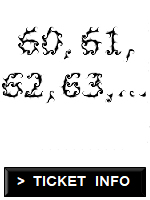Like a desert after rain, the 60s saw an explosion of creativity. And all intimately tied up with sociopolitical dynamics still relevant today. The mumok’s Mapping the 60s exhibition takes a closer look.
- A study, exhibition and critique of an era and its art
- Works primarily from the prestigious in-house collection
- Built around seminal art events, movements & publications
- Runs Jul 5, 2024 – May 10, 2026
- Book mumok tickets* online
- See also
Art & history

(Exhibition view: Mapping the 60s. Art Histories from the mumok Collections; Konrad Klapheck, Triumph of Destruction, 1970; Domenico Gnoli, Tie , 1968; Yoko Ono, White Chess Set, 1966; press photo: Klaus Pichler / mumok)
Ah, the 1960s.
Sadly, I was born at the end of the decade. Too late to enjoy the music or England’s World Cup win. But at least I can say I was in the same country as the Beatles during their rooftop (and last) live performance on January 30th, 1969.
Anyway…the 1960s. A decade when culture and society threw off some shackles. When people increasingly realised the old way wasn’t necessarily the right way just because it was the old way.
A decade when movements for protest and change blossomed that still resonate in today’s sociopolitics. And various art movements emerged, came of age, or cemented their impact on the maelstrom of cultural life. Movements (think Pop Art) still heavy with influence today.
Which brings us to the Mapping the 60s: Art Histories from the mumok Collections exhibition.
Rather than a purely chronological or generalist approach, the mumok’s exhibition centers on selected important art events, genres and publications in the 1960s. We learn a little of the history, context and influence of each, illustrated with documentary ephemera and, particularly, art of the time.

(Exhibition view: Mapping the 60s. Art Histories from the mumok Collections; Jann Haworth, Snake Lady, 1969–1971; Sine Hansen, Beglühte Sicherheit / Illuminated Safety, 1965; Sine Hansen, Großer Steinbeißer / Large Spined Loach, 1966; Sine Hansen, On Top, 1967; Sine Hansen, Good Morning, 1970; press photo: Klaus Pichler / mumok)
The displayed works draw on the in-house collection and the Austrian Ludwig Foundation.
Each section brings a little pocket of art history to life, offering insight into the interface between creative endeavour and sociopolitics. Like a hybrid art and cultural history exhibition: anchored in the past but eerily relevant to the present.
An example is the documenta 4 exhibition held in Kassel.
A look at the list of participating artists at the 1968 event reveals such illustrious names as David Hockney, Lucio Fontana, Jim Dine, Andy Warhol and Roy Lichtenstein.
Works by artists who featured in the exhibition accompany an overview of documenta 4‘s context and importance. So we have, for example, a Lichtenstein, but also works by the likes of Fahlström, Thek, Pichler and Klapheck.
One common thread through Mapping the 60s is self-analysis of the mumok’s historical acquisition and exhibition approaches. This includes implicit self-criticism, as seen in the highlighting of the few pieces by women from the time. For all its progress, the 60s still had an art sector dominated by males.
Dates, tickets & tips
Enjoy connecting with the past from July 5th, 2024 to May 10th, 2026. An entrance ticket for or from the mumok includes the special exhibitions within.
(Booking service provided by Tiqets.com*, who I am an affiliate of)
Mapping the 60s stretched across two floors initially, exploring the mumok of the 1960s, pop art and the role of those seminal exhibitions and publications. They added another floor in early December, 2024 with a focus on additional art movements.
Vienna is a melting pot of modern and contemporary art these days. A place where giant murals and Baroque churches share the cityscape. See here for an overview of what you might go and see.
Be sure also to explore the other offerings around the MuseumsQuartier location of the mumok building…from modern and contemporary art museums to viewing platforms and art installations.
How to get to the 60s
Just jump in a DeLorean. Or…follow the travel tips on the main mumok article. The exhibition is on floors -2 and -3 (with the addition of floor -4 from December, 2024).
Address: Museumsplatz 1, 1070 Vienna
